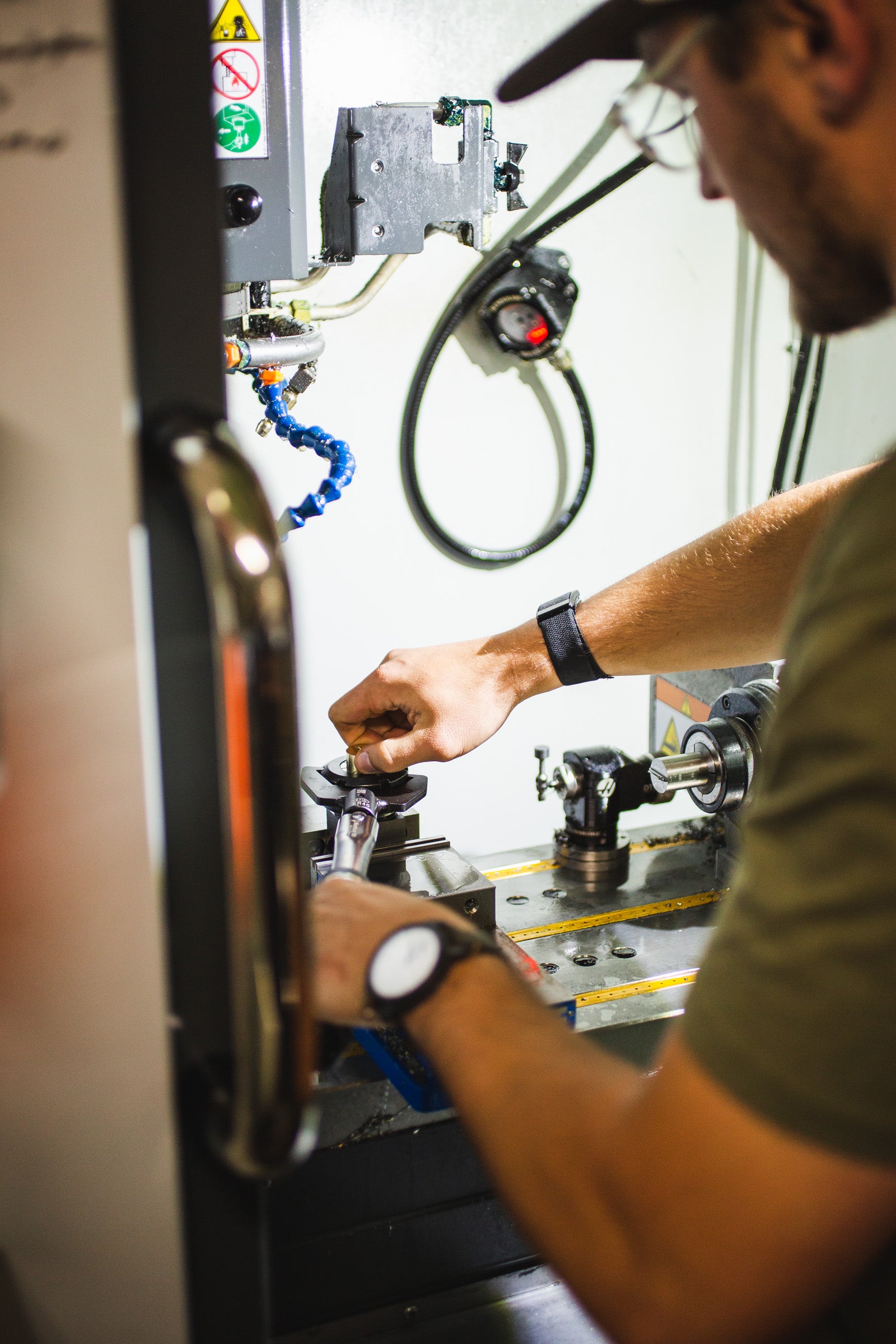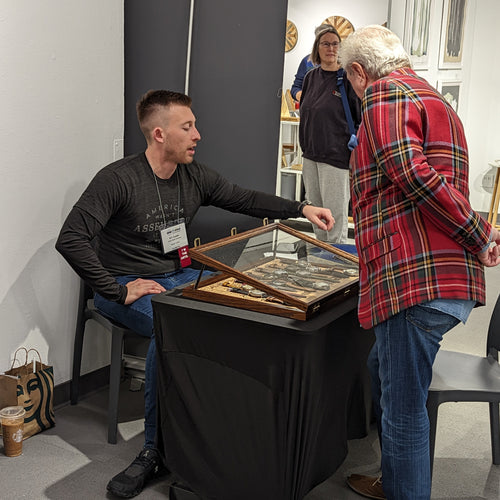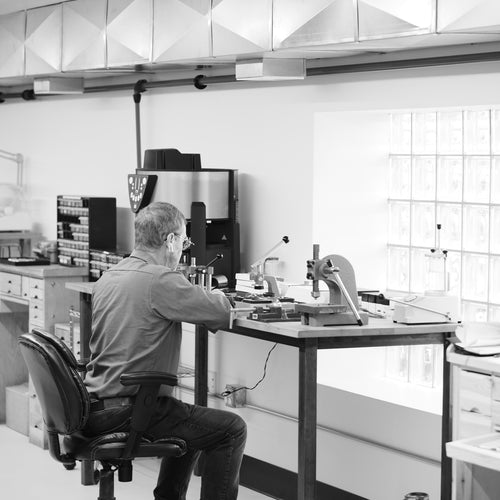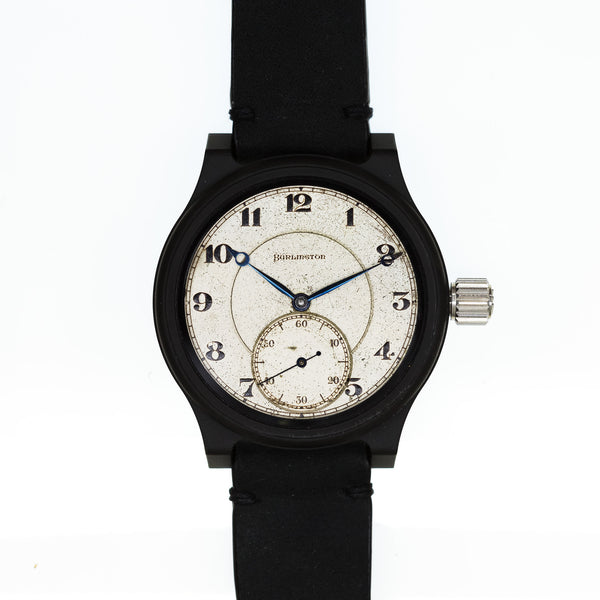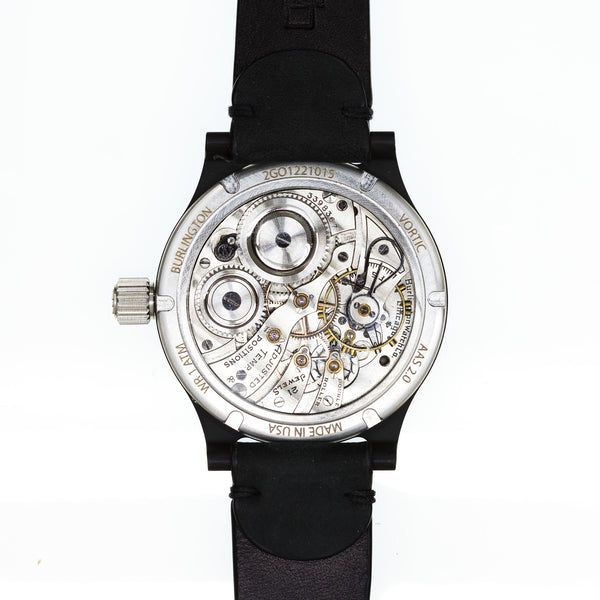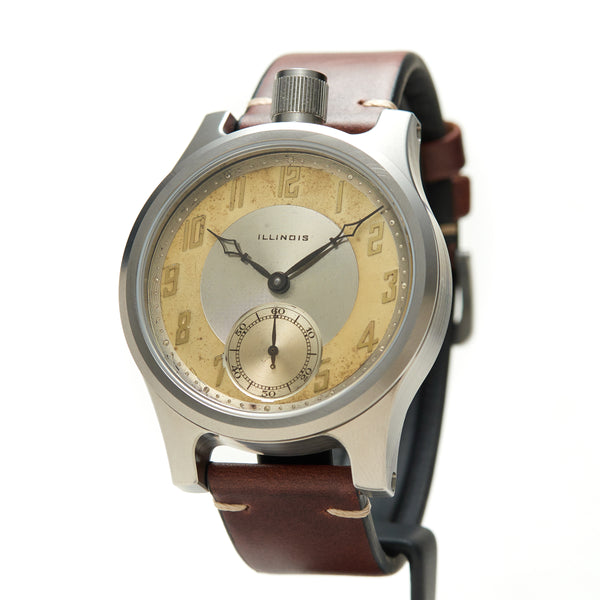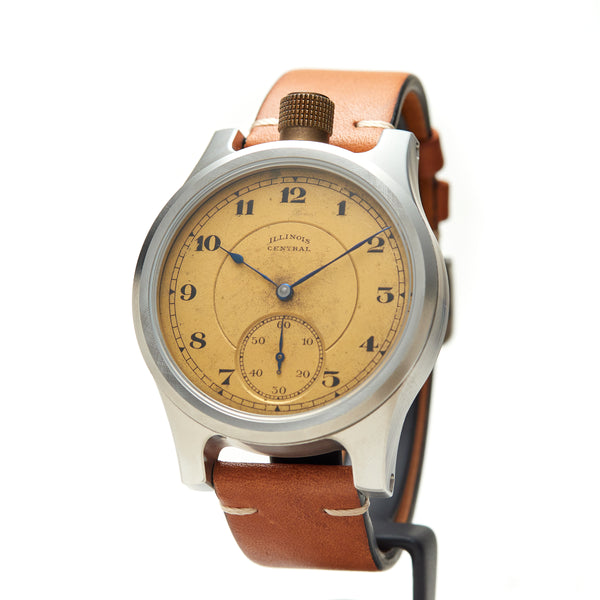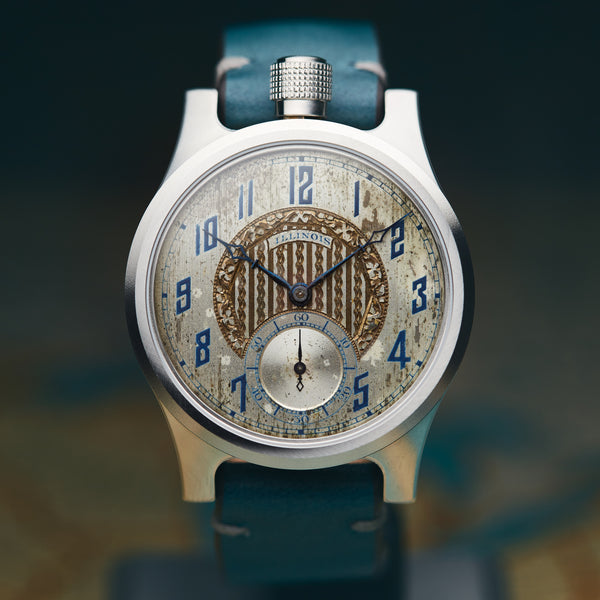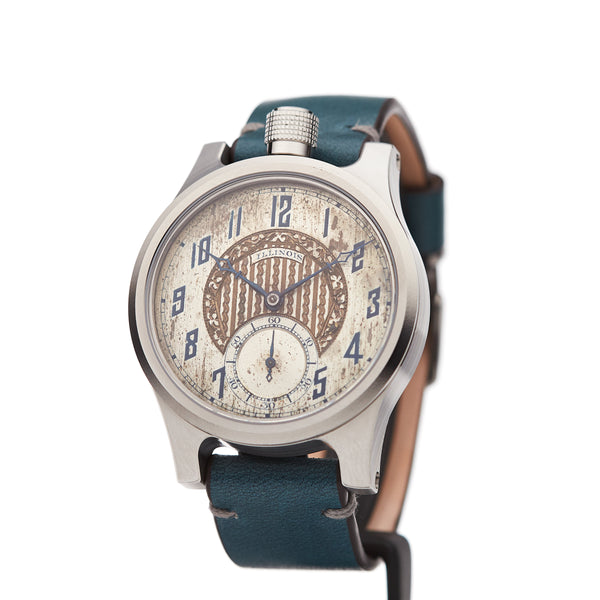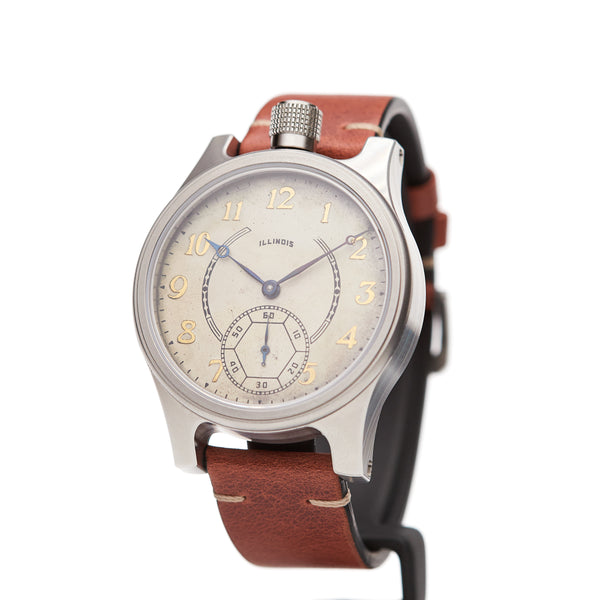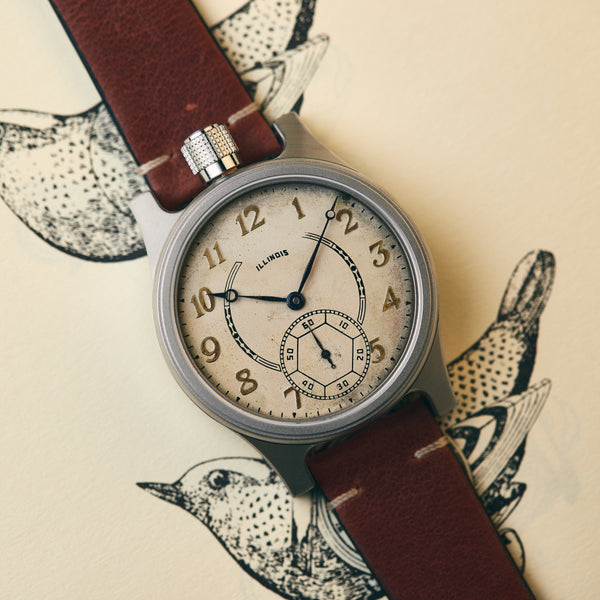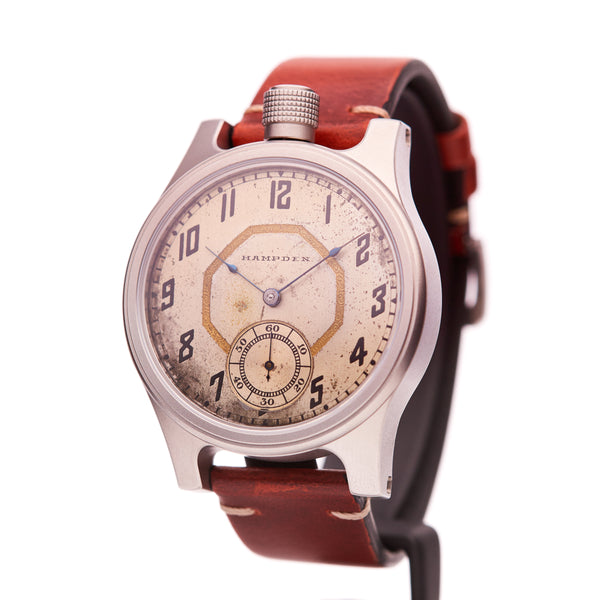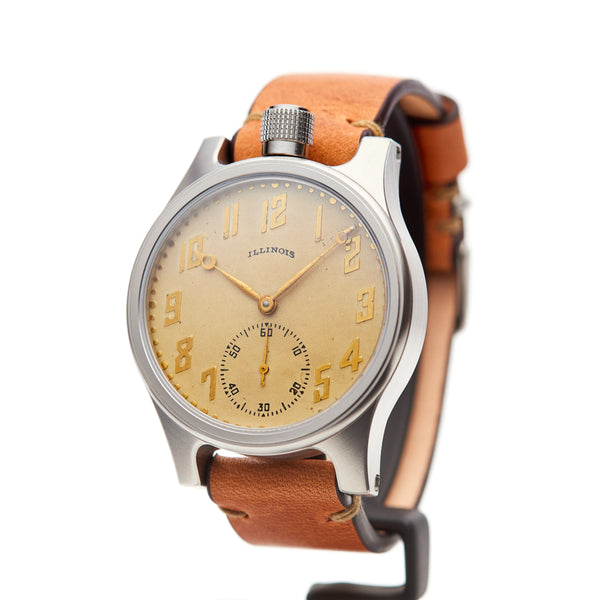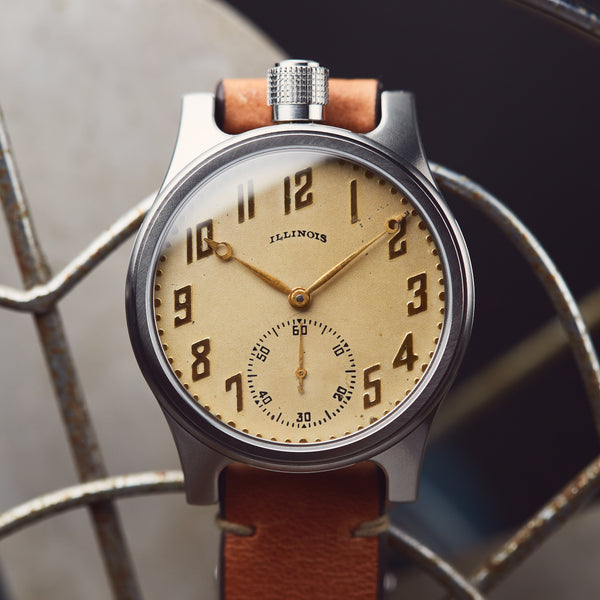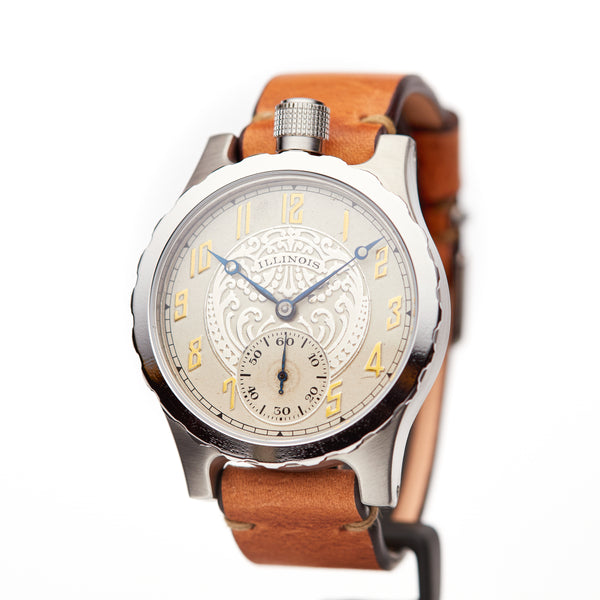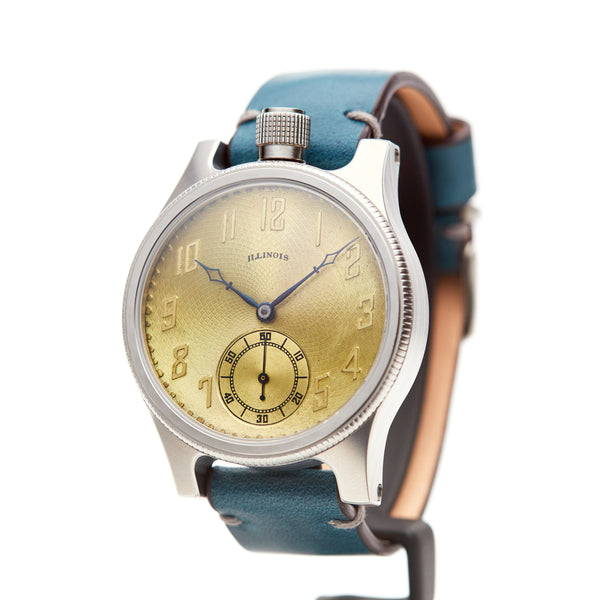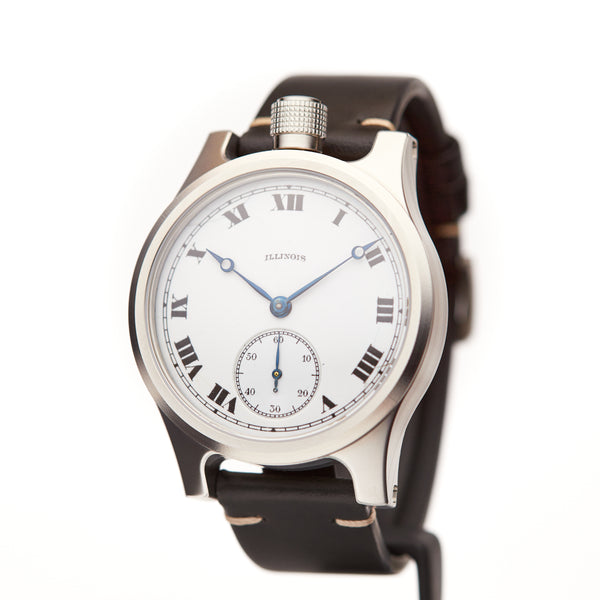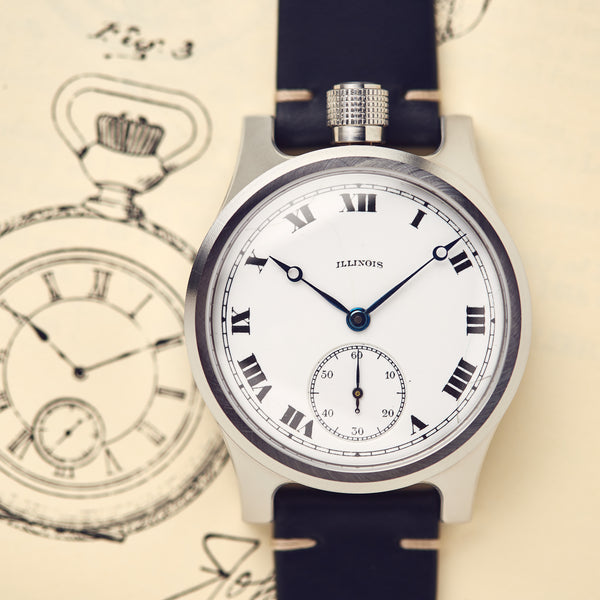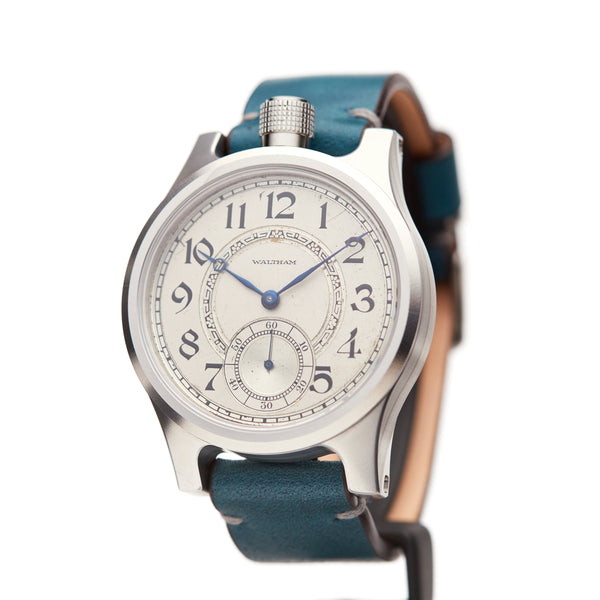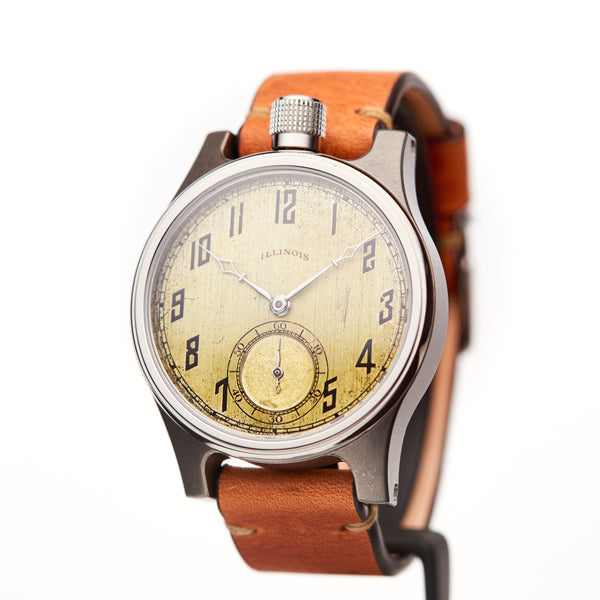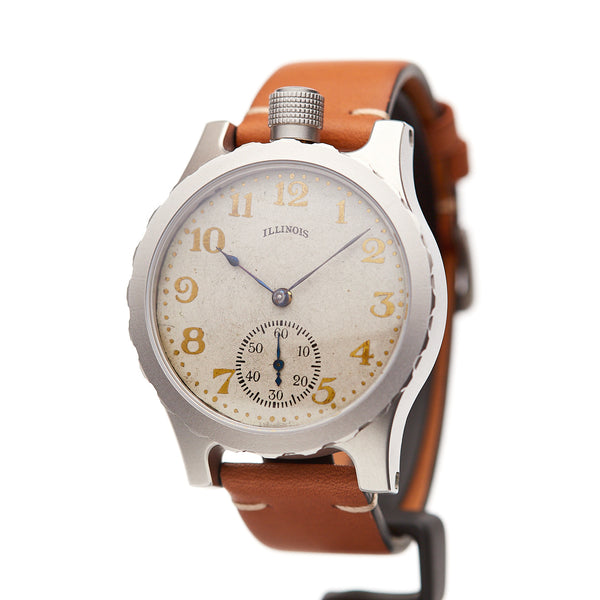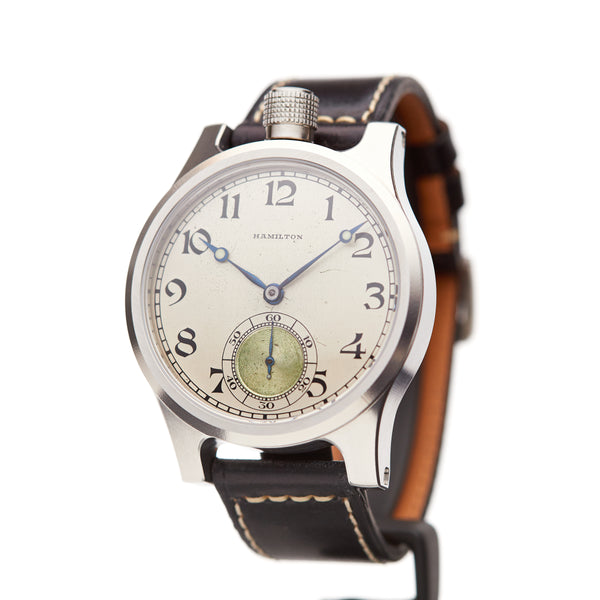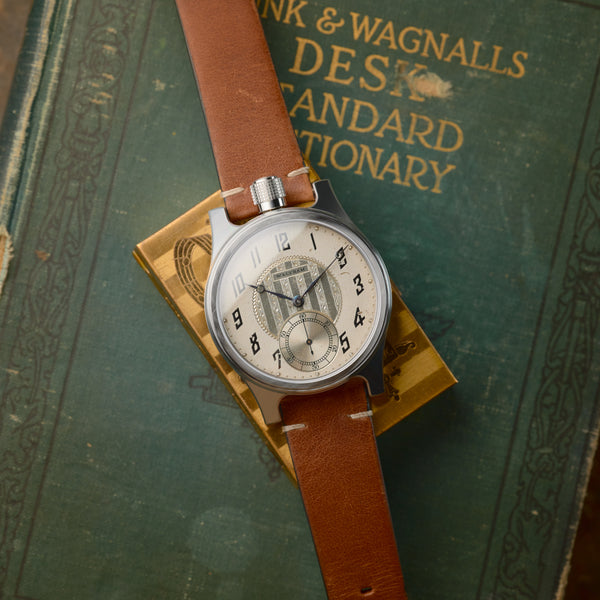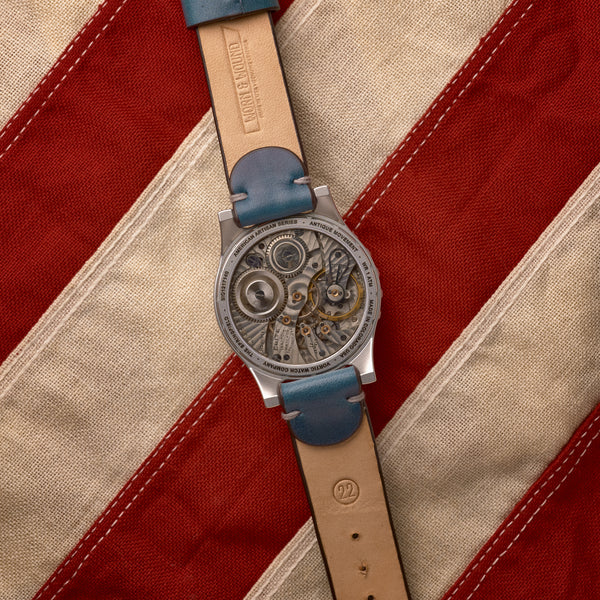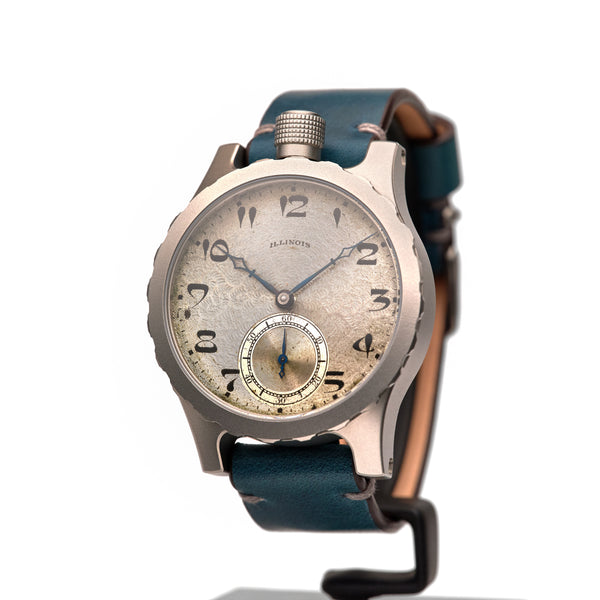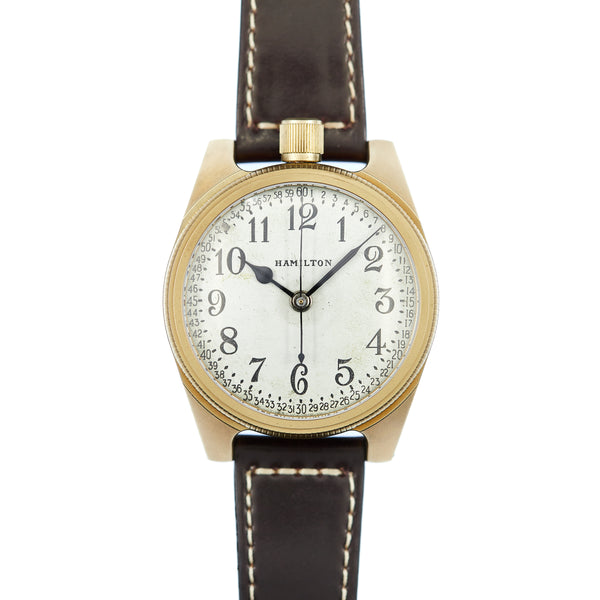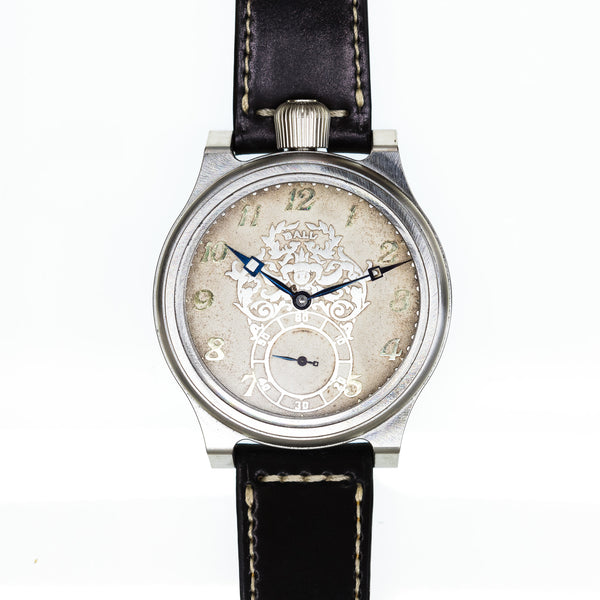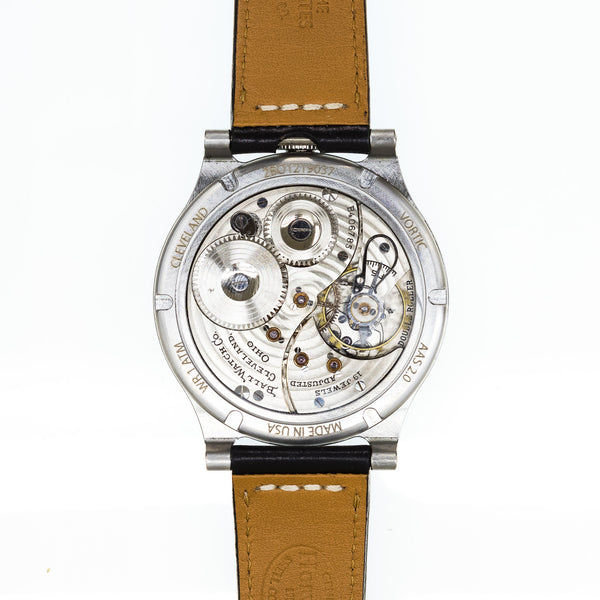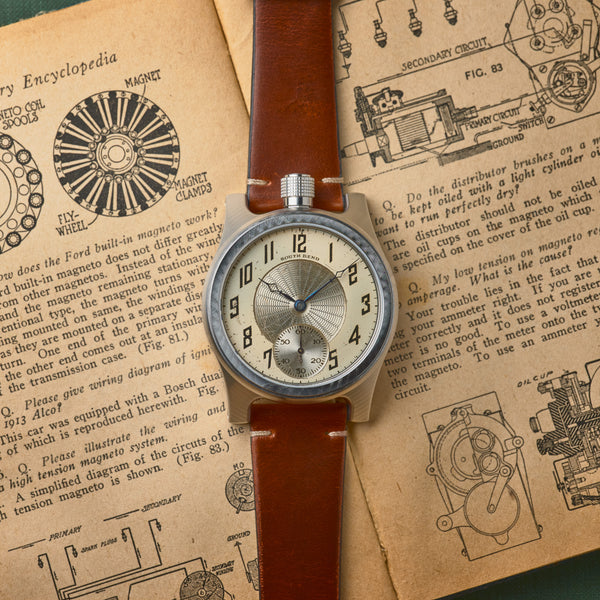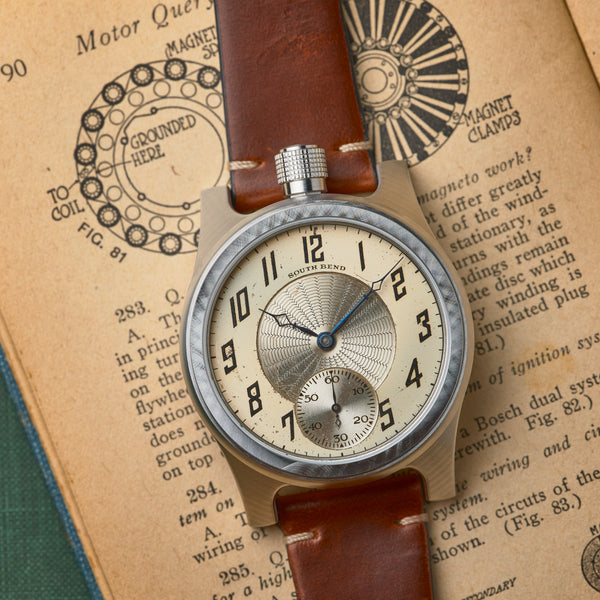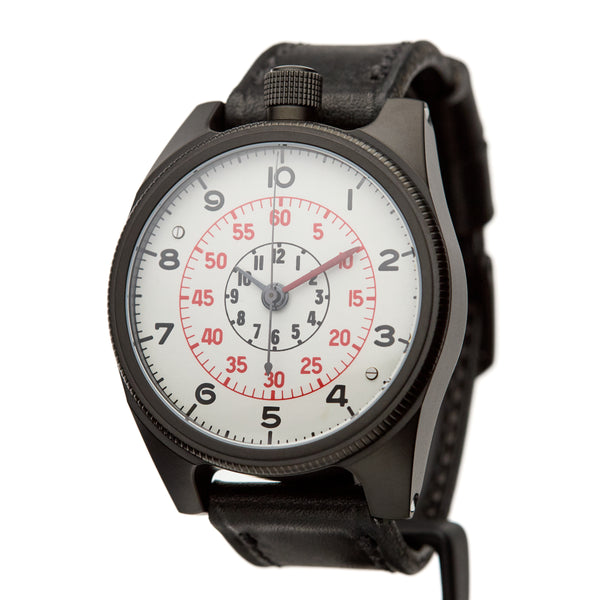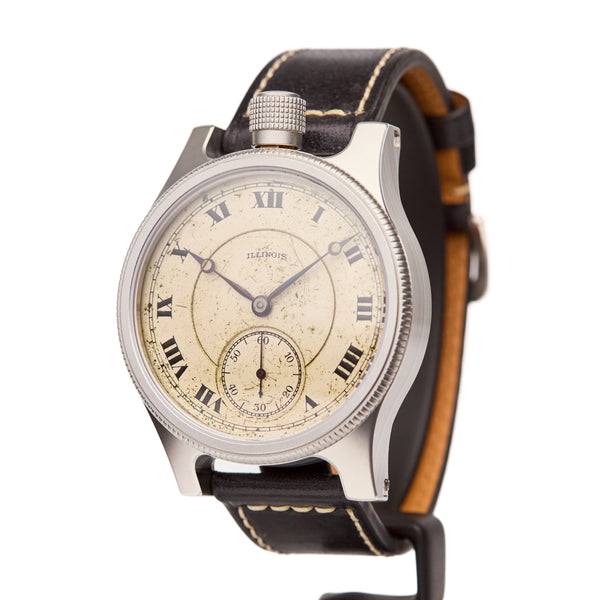Building high-quality, American-made watches takes more than just determination and hard work — it also requires expert machinery.
One of the most critical pieces of machinery we use at Vortic Watch Company is called a lathe. These machines cut and shape metal materials to form our pocket watch cases and other components.

The co-founder of our company, Tyler Wolfe, detailed what exactly makes a machine a lathe and how it differs from a milling machine. He shared these insights on our Custer & Wolfe: Building a Watch Company YouTube series.
In this entry of Custer & Wolfe, you'll learn all about lathes, mill turn centers, live toolings, lathe automation, and more. Let's dive in!
What Is a Lathe?
A lathe is a piece of machinery that cuts material by rotating it. The lathe's spindle turns the material while the cutting tool remains stationary in order to shape the material into a part. This differs from a mill because mills rotate the tool rather than the material:
"The difference on a lathe [is] you spin the material [and] not the tool. So now the material is spinning, and we come in with a stationary tool that shaves material off. Whereas on a mill, we have a spinning tool and a stationary part that we're shaving material off." - Tyler
Lathe machines move tools along an axis in order to make cuts on the material. For example, our Haas CL1 is a two-axis lathe. The machine moves the tool along its X and Z axes in order to make cuts on the rotating part. The machine's spindle spins the part, enabling the non-rotating tool to shave off materials.

These machines come in many different shapes and sizes. Our first lathe machine was manual, and we used the device to make some of our first watch cases. Although much smaller than our newer lathes, the manual lathe still functions the same way: The spindle rotates the material while the stationary tool cuts it.
In order for a machine to be considered a lathe, it must have stationary tools and a way to spin materials. The stationary tools make cuts to the spinning material.
Mill Turn Centers
In addition to standard lathes, businesses can also invest in mill turn centers, which function as a mix between a lathe and a mill.
"Some of the fancier blades they call ‘mill turn centers.’ If you ever hear of a mill turn machine, they're actually somewhere between a lathe and a mill. They'll have a milling spindle that can come in [and cut materials,] … but they can also spin the material." - Tyler
Mill turn machines often come with a secondary spindle, known as a sub-spindle. This enables machinists to perform multiple cuts on a piece of material simultaneously to increase efficiency.
"[Machinists] can start parts on the main spindle [and] come in with a milling head [to] mill. [Then they can] come in with a turning turret and turn it and then transfer it to the sub-spindle. [Next, they can] mill with a head and then come in with a turret and turn it more and finish parts." - Tyler
Mill turn centers are exceptional devices that can function as both lathes and milling machines, and their ability to perform multiple actions can speed up the process of shaping materials.
What Is Live Tooling?
Many lathes have live tooling abilities, meaning the tool spins rather than the material. This enables the lathe to function as a mill:
"It gets a little bit confusing because we can mill on a lathe. Live tooling … [uses a] spinning tool that can come in and shave material off of a part very similarly to a mill. So you can do milling on a lathe, but it doesn't change the fact that [it's still] a lathe." - Tyler
Our Haas CL1 features a turret-style tool changer that swaps between the lathe and milling tools. The machine then moves the selected tool into the material to make cuts.
Using a Sub-Spindle with the Haas ST-20Y
Although our Haas CL1 is an impressive machine, it's far more basic than our Haas ST-20Y, which features three axes.

"This spindle spins the material, and we have our cutting tools that will come in and shave material away. This also has a turret-style tool changer, [but] it's oriented a little bit differently. What makes this a three-axis lathe is that the turret has three axes so we can move in X, Y, and Z." - Tyler
The additional axis allows more flexibility of movement than a two-axis lathe, and this flexibility is necessary for producing certain parts.
"There are certain features of parts that are only capable of being produced on a three-axis lathe as opposed to a two-axis." - Tyler
Another critical feature on our Haas ST-20Y is its sub-spindle, which functions as a valuable secondary spindle.
"[The reason] why [the sub-spindle is] important on a lathe [is because] oftentimes … [when] we cut the part off, the part either drops off or has a secondary operation. When we cut it off, it'll have a small nib or leftover material that we don't necessarily want." - Tyler
The sub-spindle can efficiently remove the leftover material that remains on the piece. Additionally, a sub-spindle can enhance the lathe operation's speed because it can work on multiple sides. When using a single-spindle, the machine can only work on one side of the material:
"On the [Haas] CL1 we can only do operations on the front side of the part, so we're only finishing one side of the part, and they're gonna need to go back into the lathe again to have a second operation done." - Tyler
When you use a lathe with a sub-spindle — such as our Haas ST-20Y — you can work on multiple sides of a part without needing a secondary operation.
"To finish the part on this machine, we can start the part on the main spindle, come in with this sub-spindle, grab onto the part while they're both spinning, cut that part off, retract the sub-spindle, and [we can] actually do work on the backside of the part. When the sub-spindle is done with the part, it'll reject it into a parts catcher, and we have a fully finished part." - Tyler
You can complete a fully finished part without a secondary operation by using a lathe with a sub-spindle.
Implementing Automation with a Bar Feeder
One valuable advantage that lathe machines have over mills is the ability to automate your workflow when cutting materials. With a lathe machine, you can insert a full bar of material that the machine will continue cutting automatically.
"On a lathe, we can put a full bar of material in the machine. It'll continue cutting off individual parts and pulling more material out. [It will] cut the next part, ... catching it in a parts catcher, and then pull that bar forward so we can cut another part." - Tyler
Many lathe machines also come with a bar feeder, which automatically feeds bars into the machine so that the lathe continues cutting the materials.
"We can have multiple bars in [the bar feeder,] and it will load [each] bar into the machine automatically. … We're making very tiny parts; … out of a four-foot piece of material, we can sometimes [make] a hundred parts. [The bar feeder] will keep loading bars into the machine — each bar making somewhere around a hundred parts — and we can let this machine continue running." - Tyler
Our Haas ST-20Y has a four-foot bar feeder, and our DMG Mori Sprint 20 Swiss machine features an even more impressive 12-foot bar feeder, making the lathe workflow even more efficient.
The DMG Mori Sprint 20 Swiss Machine
In addition to boasting a 12-foot bar feeder, our DMG Mori Sprint 20 Swiss machine also features a much faster spindle than our Haas ST-20Y and Haas CL1. Our Haas machines are somewhat limited when it comes to spinning speed:
"The bar feeders that we have on our CL1 and our ST-20Y limit the speed that we can turn our material at because it'll cause too much vibration." - Tyler
The Swiss machine can spin a 12-foot bar up to 10,000 revolutions per minute (RPM). This is important because the smaller the part, the faster you need to spin the material to cut it properly.

In addition to providing greater speed, our Swiss machine has two sets of gang tools. Our Haas machines have rotating turrets that swap tools as needed, but with our Swiss machine, the tools are lined up:
"[The] Swiss machine doesn't have turrets — it has sets of gang tools, so [its] tools [are] lined up. It doesn't spin the tools, and the tools only move in X and Y [axes]. The material is actually the Z axis on this machine, and the reason for that is that it's always as close as possible to the spindle. So, it has the highest level of rigidity that we can get." - Tyler
The machine's spindle moves material along its Z axis while moving the gang tools on the X and Y axes.
Like the Haas ST-20Y, the Swiss machine features a sub-spindle, but it has an even more efficient workflow with its two sets of gang tools.
"We have two sets of gang tooling on this machine. ... Like on the ST-20Y, we'll transfer a part from the main spindle to the sub-spindle to work on the backside to make sure that we're making a fully finished part. This machine can work on the main spindle and the sub-spindle at the same time, basically cutting our cycle times in half because we're doing two operations at [once]." - Tyler
The Swiss machine can use its spindle and sub-spindle simultaneously because it has two different sets of gang tooling.
Learn More About Lathes and Other Critical Machines
Lathes are essential for our watch-building workflow and offer tremendous efficiency and valuable tools for automation. If you're ready to learn more about lathes and other essential tools in our machining arsenal, you can check out this full Custer & Wolfe episode on YouTube as well as other informative entries in the series.
You can also check out the incredible watches that our lathe machines helped create, including our American Artisan Series, Military Edition, and Railroad Edition watches.
Finally, don't forget to keep up-to-date with the Vortic Watch Company by following us on Instagram and by subscribing to our email newsletter.

